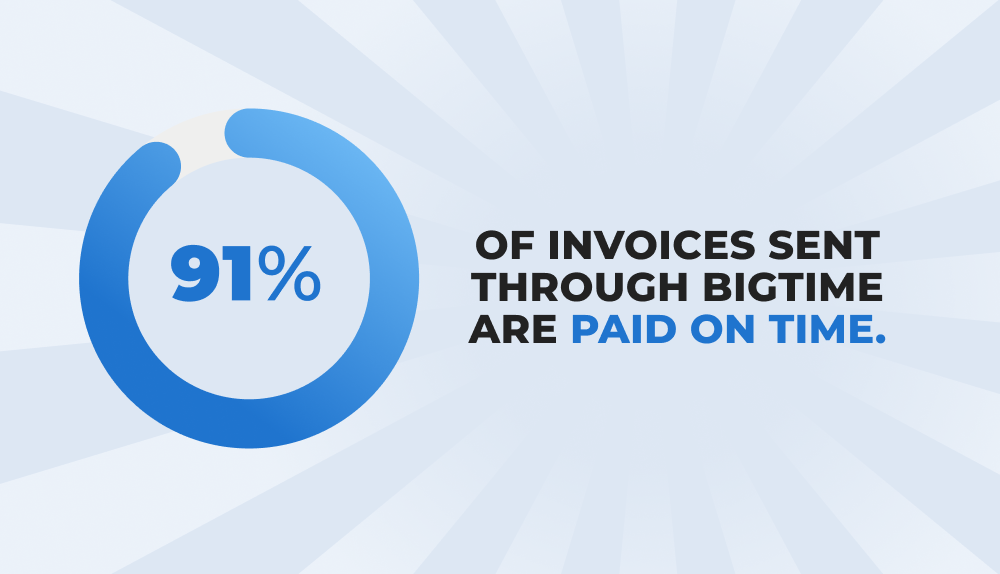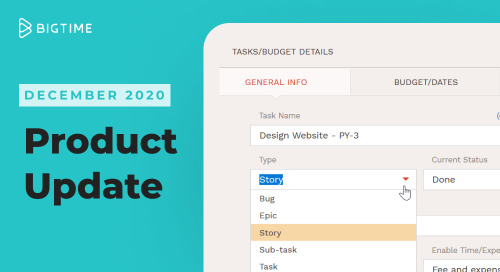
Whether we can believe it or not, 2022 is here. Around this time last year, we sat down with our CEO, Brian Saunders to chat about the whirlwind of a year that was 2020 and his predictions for 2021 (watch the convo here). Now at the start of this new year and new journey, we again sat down with Brian to pick his brain on what he predicts 2022 will look like for both BigTime and the professional service industry.
Using what he’s learned and experienced first-hand throughout his career and leading BigTime through a pandemic, Brian shared with us his forecast for the new year with one key theme in mind — preparation.
Keep on reading to get an inside look into what Brian foresees in the upcoming year and his advice for making it a successful one.
2022 Professional Services Industry Trends
What do you think this new year will look like for professional services?
I think this is going to be a tricky year for professional services. Lots of people have paused growth in order to kind of see how things play out. I think in 2022, that’s going to catch up to them a little bit.
What we end up with is this rush to staffing. More and more, especially as people come back from remote, staffing becomes hugely important. Making sure you have the right people on the right project and that you train staff properly and have a repeatable process. It’s really going to kind of separate the organizations who have worked hard during this little downturn from the people who have not. So as we come out of this, if you furloughed staff, laid off staff, reduced staff, or just kind of froze in place and tried to do more with fewer, you really need to get going because that demand is going to come back.
If you were still running your previous IT consulting firm that came before BigTime Software, what would you be doing right now?
I’d be at college campuses recruiting people who are new to the workforce, excited to be in an organization, and haven’t been in duck and cover mode for two years. There’s a whole generation of consultants out there who are eager to get in and make their mark. I think there’s a chance that the early wing of Gen Z ends up being a real force within the workplace because they’re coming in on the heels of people in their twenties and thirties that are just kind of burned out.
It’s been a tough couple of years. There’s a lot of push away from the office, away from work, away from kind of the ‘career’, and more towards the ‘gig’ in that late twenties, early thirties generation/group. I think the folks coming out of college could do some real damage. You could see that group lap the folks who graduated 10 and 15 years before them just because they’re coming into it with fresh legs and excited about the opportunity, as opposed to being maybe a little jaded about what career path actually holds for them.
BigTime is a tool that assists a remote working environment — how have you seen the need for operational management software like BigTime change in the past year?
We’re always trying to help our customers relate to their customers and make things easier for everyone. With more people working remote, online payments have been a big initiative — breaking that time-consuming cycle of “I need to get to the office so I can print a check so that I can mail it so that somebody else can get to the office and open it and then deposit it at the bank”. We’re trying to break out of that cycle and just smooth out the relationship between our customers and their customers (and have them get paid faster).
Another thing that we’ve seen be a big need for since working remote has been focusing on real-time reporting metrics. With real-time metrics, it’s much clearer for staff to know where they need to spend their time each day, and as a team, where they need to work together. It’s interesting because about 50% of the time, budget overruns are related to customer needs. But the other 50% of the time, it’s not driven by the customer, it’s driven by the lack of internal communication. And so within the system, we’ve tried to streamline that process of budget, to project, to tasks/to-dos, all the way to timesheet entry, so that communication is clear for everyone at the firm. Our integrations with tools like Slack also help us to strengthen internal communication.
Do you think this will be the year that on-premise software finally expires with the rise of hybrid offices? What would you say to those people who are apprehensive to convert to cloud-based software?
Well, I don’t think anybody’s really apprehensive about the cloud anymore. Maybe they are, but I think it’s less about the cloud and more about control. And the interesting piece about that puzzle is you could get more control moving your data into the cloud. You just do. You decide who accesses it, you decide what areas things get embargoed, what IP addresses can access it, and who gets to see which reports. Rather than just throwing it onto a network drive where everybody can see everything and you’re not exactly sure what the security is.
The other piece of that is when an integration is sitting on your server, you own it. If it breaks, it’s your problem. So great, now you become your own IT department. You’re calling the various vendors to say, “why is this thing not working?” or “how do I tweak it?.” When it’s in the cloud, it’s the software provider’s problem. The integrations then become something that the SaaS company has to pay attention to and monitor/fix when issues arise. The positive of the cloud is instead of being your own IT person, our company has thousands of customers all over the world, which makes us even more accountable for spotting potential issues. If Google or Intuit puts out a release that breaks something, we’re going to spot it way before you do, and that’s going to flow through our support team. By the time it actually affects you, chances are high that we’ve already figured it out and either issued a fix or are in the process of doing it.
In total, I would say the benefit of cloud software comes down to security, control, and letting someone else problem solve the IT issues for you.
Looking to the future, what are the biggest challenges you predict professional service firms are going to experience?
I have absolutely no idea. Everybody hates uncertainty and we’re entering into a year that’s uncertain. The challenge is to avoid groupthink and to start to figure out in this uncertain environment, how can I exploit it? How can I grow? How can I act, as opposed to ‘wait and see’, while my competitors are on their heels?
I think the challenge is getting ahead just a little bit… it’s like a swim relay. It’s about getting just a little bit ahead, just a microsecond ahead of the rest of the competition, and getting out there early to staff up and be ready for client demand.
Wait and see is a terrible idea. It’s funny because the exit from the downturn is always missed opportunity. In 2002 and 2003, if you sat on your heels, you missed a ton of opportunity, whereas the people who spun around that downturn and turned it into an opportunity are the ones who actually gained. Ditto 2009, as we were coming out of the financial recession, and the same thing will be true now in 2022. Waiting and seeing isn’t going to kill the company, but you’re going to miss out on what could be a once-in-a-decade opportunity to grow the firm that you’re running.
BigTime Year in Review
First taking a step back — what’s the biggest lesson you learned in the past year?
Coming back to the office was a big decision. And while we lost some people who just wanted more of a remote environment, I think that ultimately it’s been really good for us. For the personalities that we’re trying to attract and for the soul that we’re trying to protect within the organization, there is no other way than to have some bodies in the office. I think making the shift to being back in the office helped our team solidify the idea of “I’m here because I want to either learn or I want to help other people learn. I’m here to advance, but also I want to help other people advance”. It become a lot clearer what the advantage of being in the office a few days a week is, and I think we’re still learning how to tweak it. I also think it’s all about flexibility and working on maintaining a flexible work-from-home/office schedule. The heart of what we’re trying to accomplish is that it’s not just about a metric, a number on the screen, a face in Zoom, delivery of content, or delivery of feature set. It’s about what you do to help your teammates succeed, and you just can’t do that via Slack and Zoom calls. It’s not the same.
Knowing what you know now, what would you go back and redo?
I don’t know that I would do anything a lot different. Maybe one thing would be our internal employee training. I think we dipped our toe into training early with employees in the year, but we didn’t really dedicate the same resources that we have today to training. Now we’ve got a team of three or four whose sole job it is to get people up and running and make them feel like they understand what’s going on and what they’re supposed to do and how the system works. I wish we had done it faster and sooner.
What are you most proud of right now?
We have a really good team. It’s exciting to see what the opportunities are and we have some very exciting announcements coming up. I get to see how the organization plays as a team and I’m really proud of it. There’s obviously always work to do. Nobody ever looks at a team and says, “Gee, this is perfect, I wouldn’t change anything”. That’s just not the nature of the game. But in terms of world-class talent poised to do things that will kind of own the market, I think that’s a great spot to be in. Everybody in the organization should be proud of that.
There are so many things we’re looking forward to in this new year and lots of exciting projects in the works here at BigTime. From the launch of the BigTime Podcast to the latest Product Update, we’re not slowing down in 2022. To stay up-to-date on the latest from BigTime, subscribe to our blog.





